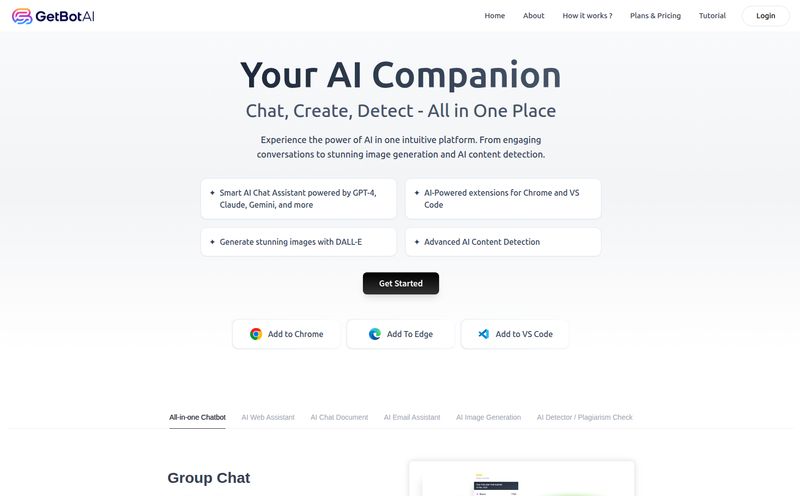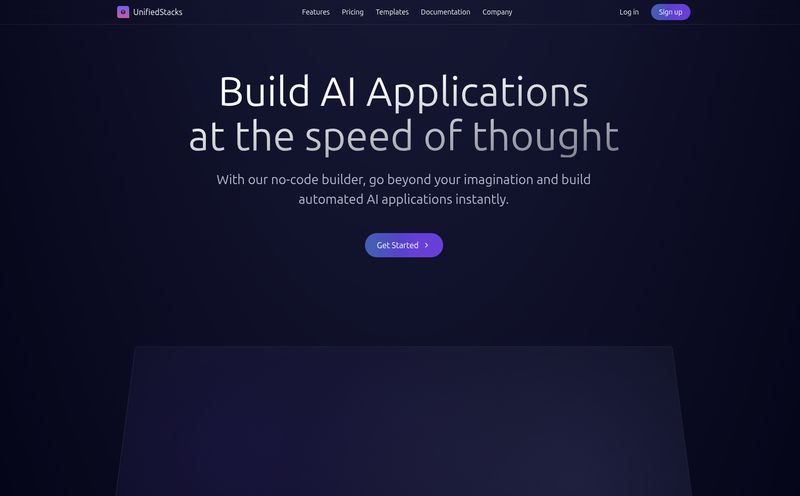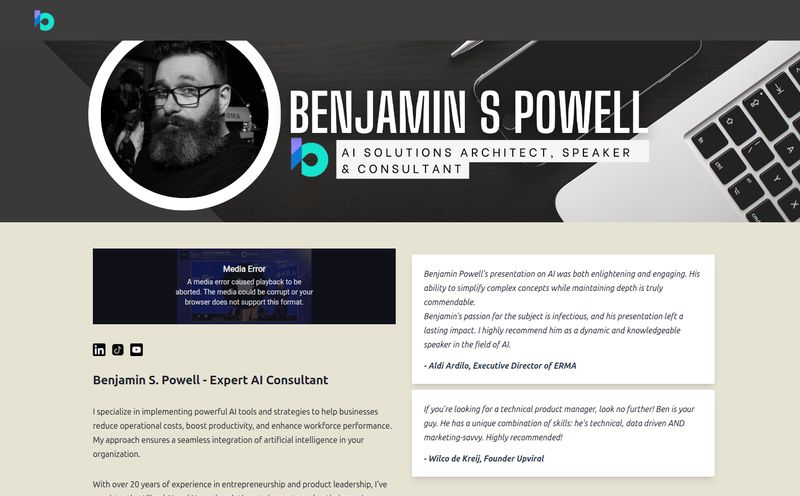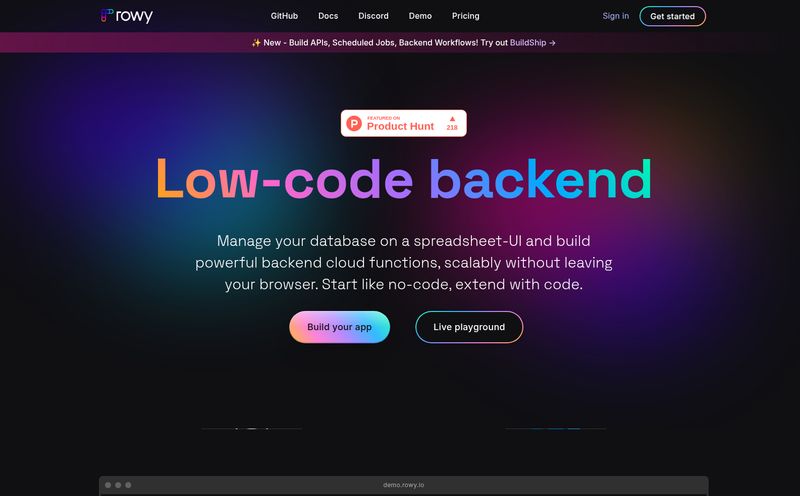The world of AI development, particularly when you're dealing with multiple cloud providers, can feel like the Wild West. You've got your models running on AWS over here, a different set humming along on Google Cloud, and maybe a legacy project still kicking on Azure because, well, reasons. Each has its own dashboard, its own API, its own security quirks. It's a chaotic, sprawling mess. And I've been in this game long enough to know that chaos is the enemy of progress (and sanity).
For years, we've been patching things together with custom scripts, a prayer, and way too much caffeine. We dream of a single control tower, a universal remote that just... works. So when a tool like EfficientAI pops onto my radar, promising to be that very thing, my cynical-optimist alarm goes off. It claims to be a multi-cloud AI platform for orchestrating, deploying, and scaling all your models, all in one place.
Is it another piece of vaporware, or is it the tool we've been waiting for? I decided to take a look.
So, What Exactly is EfficientAI?
Think of it like an air traffic controller for your AI models. You have planes (your models) that need to take off, land, and fly safely in different airspaces (AWS, GCP, Azure). Instead of talking to each airport's control tower in a different language, you have one central controller—EfficientAI—that directs all the traffic from a single viewpoint. It’s a layer of sanity on top of the multi-cloud complexity.
At its core, it's an AI orchestration platform. It doesn't want to replace your cloud providers. In fact, it needs them. You bring your own cloud accounts, and EfficientAI provides the unified interface to manage your AI assets across them. This covers the whole lifecycle: training, fine-tuning, deploying, and scaling. And here’s the kicker: it works with both the big, proprietary models (like OpenAI's GPT family, Google's Gemini, and Anthropic's Claude) and the open-source heroes like Llama and Mistral. That flexibility is, frankly, a pretty big deal.
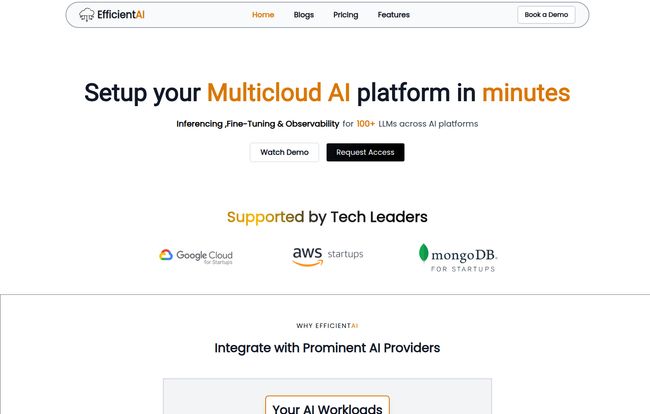
Visit EfficientAI
The Multi-Cloud Headache We All Pretend Is Fine
Why does a tool like this even need to exist? Because the “multi-cloud dream” often turns into an operational nightmare. Companies rarely choose to be multi-cloud from day one. It just... happens. The data science team loves Google's BigQuery, the main app runs on AWS, and then you acquire a startup that was all-in on Azure. Now you're stuck.
The result? Your MLOps team spends half its time just building and maintaining brittle pipelines to bridge these gaps. Monitoring is a joke – you have three different performance dashboards that don't talk to each other. Security is a patchwork quilt of IAM roles and service accounts. And don't even get me started on billing. Trying to figure out your total AI spend is a forensic accounting exercise. It's slow, it's expensive, and it's frustrating. It's the kind of work that makes good engineers quit.
The Features That Actually Matter
Okay, enough complaining. Let's talk about how EfficientAI proposes to fix this. I'm skipping the marketing fluff and focusing on the bits that made me nod and say, "Okay, that's clever."
One-Click Deployments. For Real?
The promise of "one-click deployment" always gets an eye-roll from me. Is it ever really one click? Probably not. There's always some configuration. But looking at their interface, it's clear they've abstracted away a ton of the grunt work. The goal is to get a model from playground to production endpoint without writing a mountain of YAML or custom deployment scripts. Even if it's more like "a few clicks and a config screen," that's a massive improvement over the status quo. It dramatically cuts down the time from 'great idea' to 'live API'.
A Single Dashboard to Rule Them All
This is probably the biggest quality-of-life improvement. EfficientAI offers what they call Unified Observability & Monitoring. Instead of jumping between CloudWatch, Google Cloud's operations suite, and Azure Monitor, you get one centralized view. You can see things like:
- Model tokens consumed
- LLM performance and latency
- Error rates across all providers
You can even set model-specific limits and alerts. This isn't just convenient; it's how you move from being reactive (
Why is the AWS bill so high?!
) to being proactive (
I got an alert that our Claude-3-Opus usage is spiking, let's investigate.
).
Controlling Costs Before They Control You
Speaking of bills, this is a big one. I once saw a dev team accidentally leave a high-powered GPU instance running over a weekend. Teh bill was... impressive. A real resume-generating event. EfficientAI has built-in Rate Limiting & Budgeting tools. This means you can set hard caps on API calls or spending for specific projects or tenants. It’s a financial safety net that lets you experiment without risking bankruptcy. For any manager, this feature alone is worth the price of admission.
The Good, The Bad, and The Realistic
No tool is perfect. Let's look at this with open eyes.
The Good Stuff
Clearly, the main advantage is simplifying a ridiculously complex process. It hands back precious engineering hours to your team, letting them build better products instead of wrestling with infrastructure. The centralized monitoring is a huge win. And supporting a wide range of models on your own cloud infrastructure is exactly the right approach. As Salman Mallik, a partner at Prasaga Ventures, says on their site, it's about getting to a "production-ready ground with a very minimal learning curve." That resonates.
The Reality Check
But it’s not magic. First, there's going to be some initial setup. You still have to connect your cloud accounts and configure your models. It might be simple, but it's not zero work. Second, you are introducing another layer into your tech stack. This means you're placing trust in EfficientAI's platform to be reliable and secure. It's a trade-off: you're exchanging some direct control for a whole lot of convenience. For most teams, I think this is a trade worth making, but you have to go in knowing that.
So, Who Is This Actually For?
I see a few groups getting a lot of value out of this:
- Startups and Scale-ups: Teams that need to move fast and don't have the luxury of a 10-person MLOps department. This lets them punch above their weight.
- Established Enterprises: Large companies that are already drowning in multi-cloud complexity. This could be the simplification they need to finally get a handle on their AI strategy.
- The Cloud-Agnostics: Any team that wants to avoid vendor lock-in and have the freedom to use the best model for the job, regardless of where it lives.
What's This Going to Cost Me?
Ah, the million-dollar question. Or maybe the ten-thousand-dollar question. As of my writing this, EfficientAI doesn't have a public pricing page. The site pushes you to "Start for free" or "Book a Demo."
This is pretty standard for B2B SaaS in this space. It usually means pricing is either customized based on your scale or follows a consumption-based model (e.g., you pay based on the number of API calls or managed models). My advice? If this sounds interesting, just book the demo. A 30-minute call will give you a better answer than I can guess at.
My Final Take on EfficientAI
I'm cautiously optimistic. EfficientAI is tackling a real, painful, and growing problem. As more companies adopt AI, and more powerful models are released by different providers, the need for a unified control plane is only going to grow. It seems less like a radical new invention and more like a necessary evolution of our toolset.
It won't solve all your problems. You still need smart people to build good models. But it promises to get rid of a lot of the tedious, soul-crushing infrastructure work that stands in the way. And for that, I'm definitely keeping an eye on them. It might just be the universal remote we've all been fumbling for.
Frequently Asked Questions
- 1. Does EfficientAI host my data or AI models?
- No, and this is a key point. EfficientAI operates on a "Bring Your Own Cloud" (BYOC) model. You connect your existing AWS, GCP, or Azure accounts, and the platform orchestrates your assets within your own secure environment. Your models and data stay with you.
- 2. What kinds of AI models can I deploy with EfficientAI?
- It supports a broad range, from closed-source, proprietary models like those from OpenAI (GPT-4), Google (Gemini), and Anthropic (Claude), to popular open-source models like Llama, Mistral, and others. This flexibility is one of its main selling points.
- 3. Is there a big learning curve to get started?
- While any new platform requires some setup, EfficientAI is designed to be significantly simpler than building a multi-cloud management system from scratch. One of their on-site testimonials mentions a "minimal learning curve," suggesting the goal is rapid onboarding.
- 4. How does EfficientAI help with security?
- Security is handled through a few different features. First, by using your own cloud, you inherit the security of your provider. Second, they offer features like Tenant Isolation, which is crucial for securely managing resources for different clients or projects. The Unified Access Gateway also helps centralize and control access to models.
- 5. How can this platform actually save my company money?
- There are two primary ways. First, by reducing engineering hours spent on MLOps and infrastructure management. Second, the centralized budgeting and rate-limiting features help prevent accidental cost overruns, which can be a huge issue with pay-as-you-go AI services.
Reference and Sources
- EfficientAI Official Website
- The Multi-Cloud Reality for Today's Technology Leaders - Google Cloud Blog
